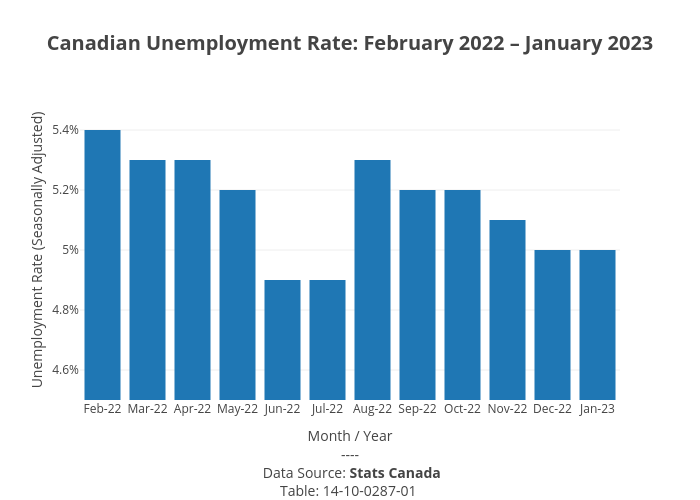10.2 The Talent Acquisition Process
Although it might seem straightforward, obtaining the right talent at the right place and at the right time, is not easy and requires extensive planning. A human resource plan comprises six main steps:
1. Evaluate the goals of the organization. What is the organization’s plan for growth? Does it need personnel to staff a new office or retail location? Is it hoping to multiply the size of its sales force to support a significant sales push? Does it intend to offer additional customer service or internal support to boost customer satisfaction?
2. Identify the factors that might affect the Human Resource (Capital) Plan. This is where the NOC and O*Net Online can be helpful. Large and small companies alike should examine information from local Chambers of Commerce, business publications and industry associations to predict possible developments in the market. That can include new businesses or other larger employers increasing their hiring or laying off employees.
Operations Manager Toolkit
3. Establish the current talent landscape. Keeping the organization’s objectives in mind, there is a need for a complete picture of the current workforce. A detailed company organizational chart can illustrate the jobs, skills, and competencies of each organization member.
4. Trend analysis. Many factors need to be accounted for when looking ahead for future needs: turnover rate, investments in new technology, the economy, the unemployment rate, and the competition (poaching) can all influence the ability to achieve one’s staffing goals. Performing a trend analysis based on historical data is an effective way to forecast labour needs. To learn more about trend analysis, review this article: Trend Analysis: What is it Used for in HR?
5. Conduct a gap analysis. The difference between your future needs and the current landscape becomes the target to meet for your recruitment process. To learn more about conducting a gap analysis, review this article: How to conduct a skills gap analysis.
6. Develop a Recruitment Plan. Considerations for a recruitment plan are considered in the following sections.
Job Descriptions
Hiring Managers often think that the first step in recruiting is posting a job advertisement. They are sometimes surprised to learn that you have to have a detailed and up-to-date job description in place before posting a job advertisement. Job descriptions are comprised of several important sections that detail the requirements of the job. These sections include:
- Job Title
- Purpose of the role
- Job Responsibilities
- Skills and Qualifications
- Work environment
- Physical Demands
- Reporting Structure
You will need to complete a review of your existing job description and ensure the information is accurate and up to date as this document will be used to write the job advertisement. If you do not use the job description to write the job advertisement, candidates may be hired into the role and then be surprised by the actual scope and responsibilities of the job as the job posting was not based on fact. This can result in morale and engagement issues and may result in a new hire starting their job search with another organization.
Recruitment Plan
The recruitment process is an important part of maintaining a rich supply of skilled candidates ready to fill upcoming roles. It is defined as a process that provides the organization with a pool of qualified job candidates from which to choose. As a process, recruitment involves an element of marketing and sales, as its objective is to raise the level of interest of customers (i.e., prospective employees) in what the company has to offer (i.e., jobs).
When devising a recruiting plan, an important element to consider is whether the pool of candidates will be sourced internally, externally or both. Each of these options have consequences for how recruiting will be conducted. Note that, for some organizations, there is really no choice but to go internal (e.g., military) or external (e.g., small business).
Internal Recruitment
Assuming the job analysis and job description are ready, an organization may look at internal candidates’ qualifications first. Internal candidates are people who are already working for the company. If an internal candidate meets the qualifications, this person might be encouraged to apply, and the job opening may not be published. Many organizations have formal job posting procedures and job bidding systems in place for internal candidates. For example, job postings may be sent to an internal e-mail distribution list or posted on a website so all current employees have access to them. Some of the benefits of hiring internally include cost, rewarding the contribution of existing staff, and existing knowledge of the candidates’ skills and abilities.
External Recruitment
The alternative to internal recruitment is external recruitment. For example, it may be decided to hire an outside head-hunting firm for a high-level executive position to help recruit the right person. For an entry-level position, advertising on social networking websites might be the best strategy. When recruiting externally, an understanding of the labour market is essential. For example, the pandemic had a drastic effect on unemployment rates in Canada in just a few months (see graph below). From a general recruiting perspective, this means that the available talent doubled in that period. Of course, the need for talent also shifted dramatically and, in general, most companies were not hiring as many employees (which causes the high unemployment numbers). However, the recruiting strategy requires a finer-grained analysis of general unemployment numbers because there are vast variations in the availability of specific talent in the labour market. For example, the pandemic has led to an important shortage of workers in healthcare and agricultural industries but an abundance of workers in other areas (e.g., hospitality).

Be Proactive
When drafting a recruitment plan, it is easy to underestimate the resources and time required for the process to unfold.
If you change the end-point to the time at which the new employee actually meets minimal performance requirements, the timeline is more like six months. Given this delay, Operations Managers need to be proactive and one step ahead of future vacancies. The objective is not simply hiring for open positions but hiring for positions that are likely to be open in the future.
The Law and Recruitment
Recruiting employees can be considered a passive process, one that does not directly involve making decisions about people. A job is posted and applicants apply. Seems simple but your ‘ad’ needs to accurately reflect the requirements of the job and candidate. The process of specifying the desired knowledge, skills, abilities, others (KSAO’s) implicitly can exclude potential applicants. In the event that some criteria may affect some of the protected categories disproportionately, it is important that these criteria be proven to be job related. For example, a job advertisement that suggests an organization is looking for a “young and energetic” individual is not in compliance with the Human Rights legislation, on the basis of age. You can, however, state that a candidate needs to pass a medical test to confirm their eyesight when applying for a job as a transit driver. This requirement is known as a BFOR, or a Bona Fide Occupational Requirement and it is legally compliant as eyesight is a mandatory and legitimate requirement for this role. Refer to the Ontario Human Rights Commission website for more information on this topic.
Operations Manager Toolkit
“The Recruitment Process” in Human Resources Management – 2nd Ontario Edition by Elizabeth Cameron is licensed under a Creative Commons Attribution-NonCommercial-ShareAlike 4.0 International License, except where otherwise noted.


